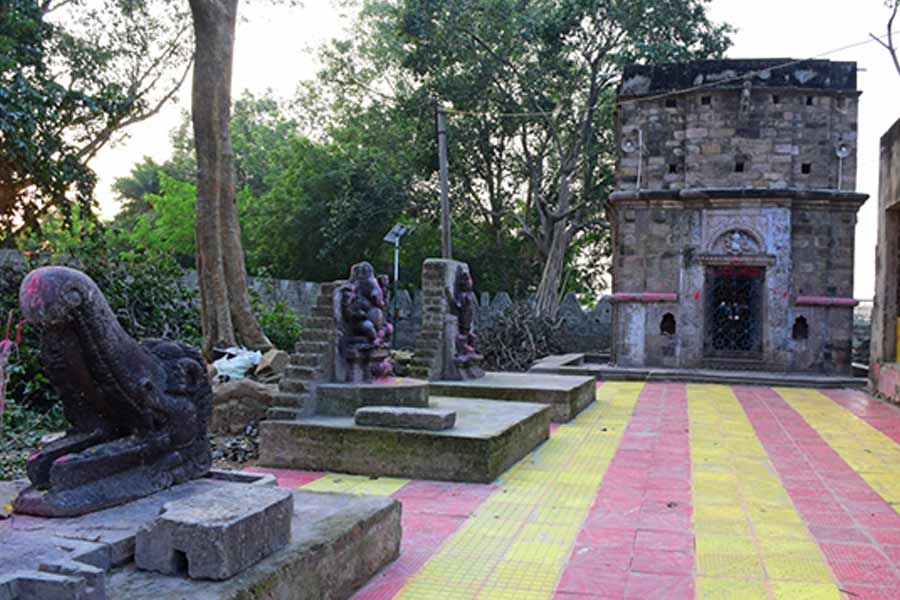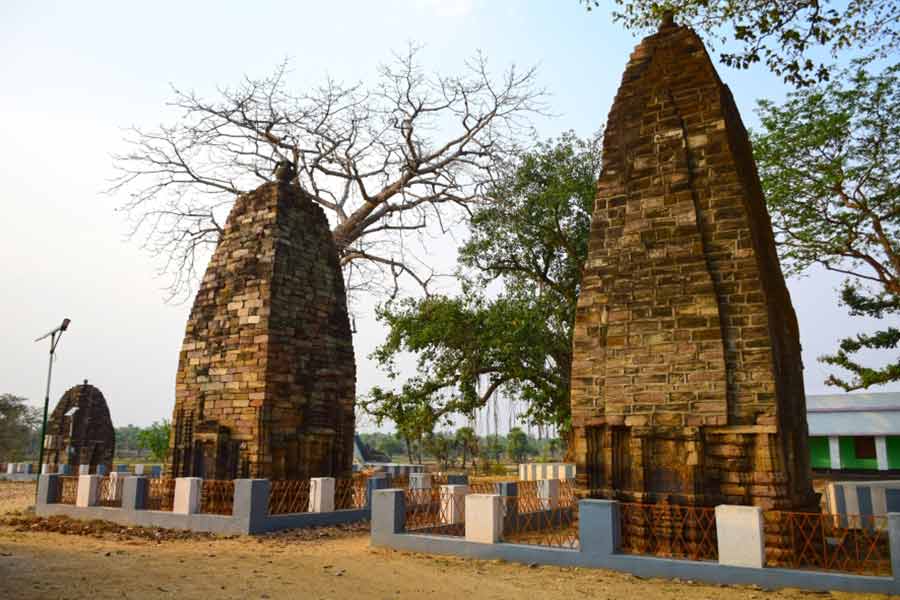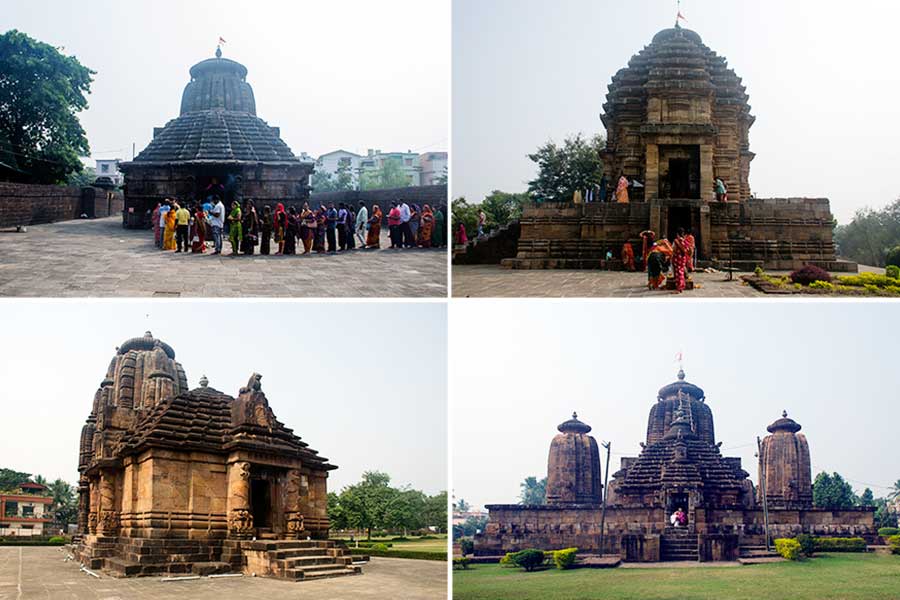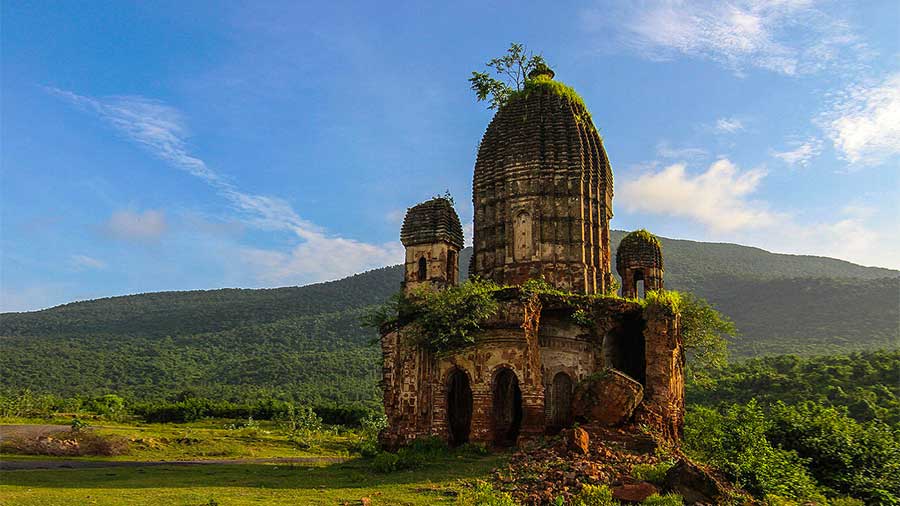Purulia district is quite popular among tourists almost every season of the year. Tourists visit to enjoy the natural beauty of the place, festivals of the district and several uniquely built heritages of the place. However, not every part gets ample footfall. Public transport is limited in the district and many of these places do not have proper accommodation facilities or decent eateries. For example, the area under the jurisdiction Puncha police station inside Manbazar sub-division has many locations for the tourists, especially for those who are interested in built heritages.
We will look into three such locations in this area. They are located within a 10-km radius around 50km south-west of Purulia town.
Budhpur
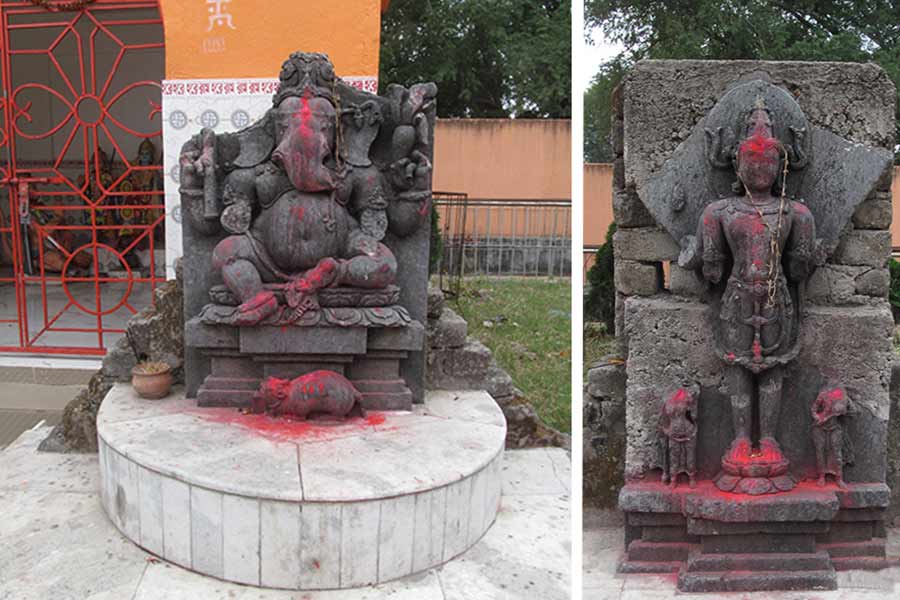
Lord Ganesha in seated posture and (right) a statue of a severely damaged four-handed deity inside Buddheshwar Temple complex, Budhpur
Located around 50km south-west of Purulia town, Budhpur is a small settlement under Puncha police station in Manbazar-1 block. On one side of the village flows the Kangsabati river and on the other side looming over the village is the Parsa hill. The place is well known for a Shiva temple complex which houses several stone-built artefacts. It is believed that Budhpur was once a well-known pilgrimage.
When JD Beglar visited Budhpur during the mid-19th century, he found the ruins of five deul-styled temples here. Beglar believed that the temples were built during 12th-13th century. Beglar was an Armenian-Indian engineer, archaeologist and photographer who was reporting to the Archaeological Survey of India during the period of British India. He describes the remains of the main shrine as “a large temple, with its full complement of mandapas without the original sanctum, in place of which a modern brick and plaster erection enshrines the object of worship, a huge lingam.”
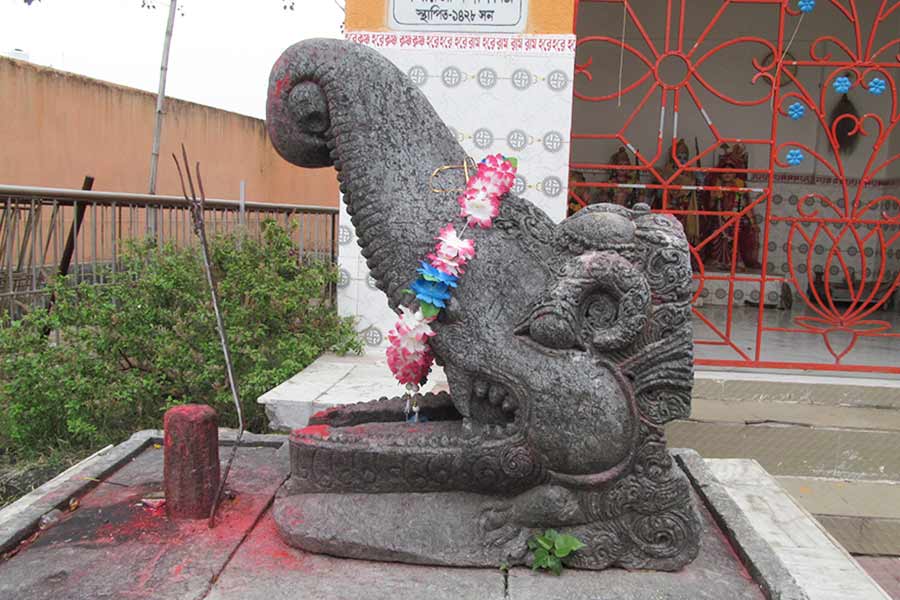
The Makar-faced water outlet inside the temple complex
The modern brick and plaster erection was later renovated into the present-day Buddheswar Shiva temple. According to the Bengali year inscribed on the temple wall, it was renovated in 1926. Local historian Subash Roy points out in his book Puruliar Mandir Sthaptya that the huge shiva lingam in the inner sanctum is actually a stone pillar whose top portion has eroded and taken a round shape. The bottom portion still depict the shape of pillar. Nevertheless, local residents worship the Shiva lingam regularly and on Shivratri there is a huge crowd of devotees visiting the temple complex.
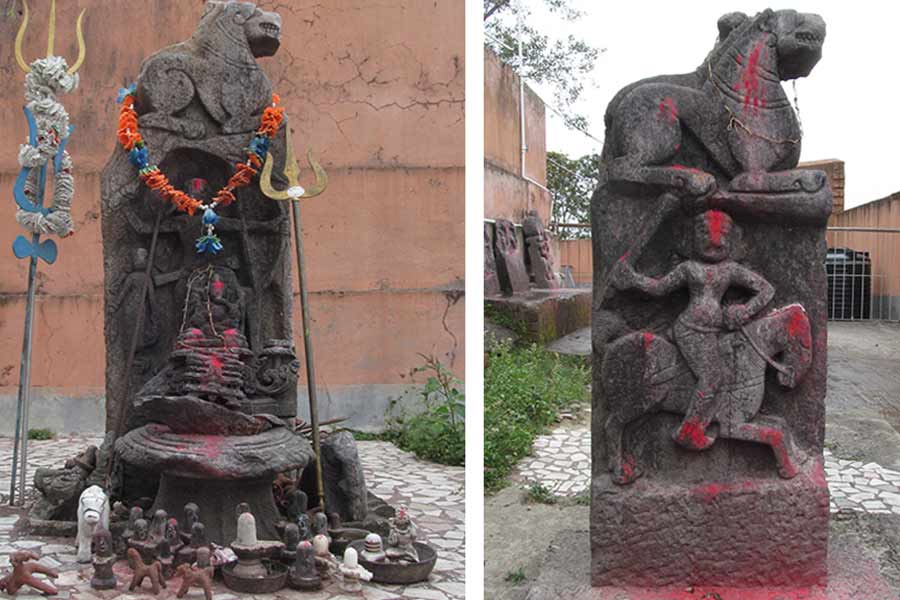
‘Veer stambhas’ or hero stones at the site
The flat roof of the temple seems to have been later made using stones from the remains of the other four temples. When Beglar visited this temple, the original roof had already broken down. Beglar mentions that “The pinnacle that surmounted the original tower roof of the sanctum lies neglected on the ground; it is an urn-shaped vessel, supported by four cobras with expanded hoods and forked tongues”.
The outer walls of the frontal side of the temple have two niches which might have housed some deities at one time. Just above the entrance is engraved sculpture of Ganesha and the foundation year etched on the wall. Near the roof is a crude sculpture of a person playing a conch.
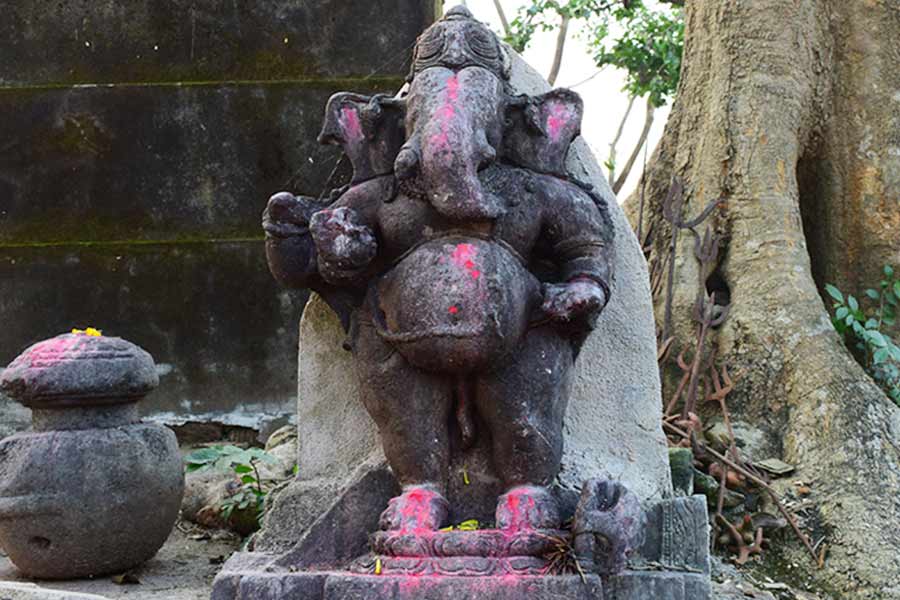
Statue of a standing Lord Ganesha
Subash Roy also mentions in his book that in all probabilities the original temples were built by the Jains and after the shrines were ruined, Jains deserted the area and Hindus built the existing temple.
In its interiors, apart from the main deity, there is a small statue of Ganesha, two small statues and a four-armed statue. There are not much details left on these figurines. However, throughout the walled complex of the Shiva temple complex there are several large-sized statues and several amalakas belonging to the other four temples. Sadly, the base of these temples was demolished somewhere around 2012.
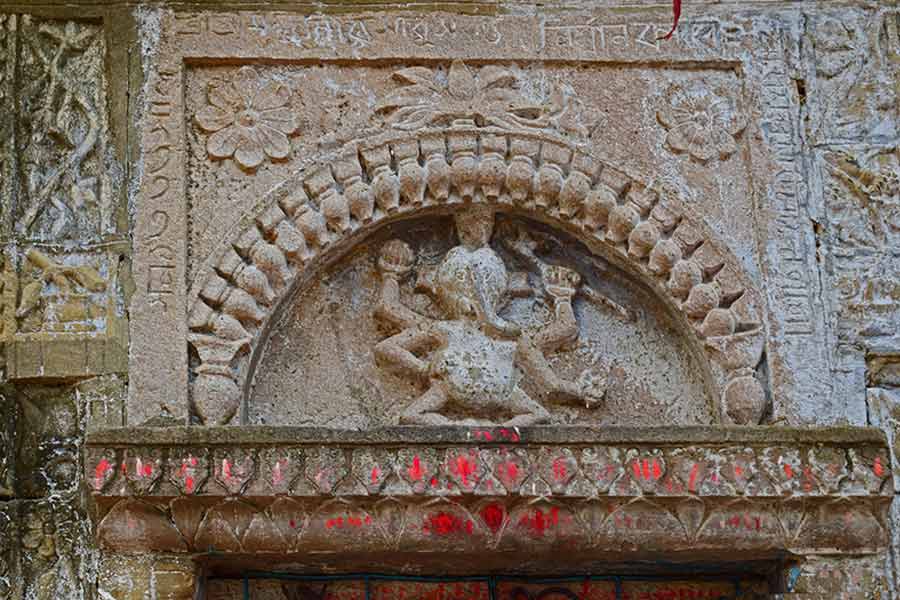
A statue of Lord Ganesha carved above entry door to the temple
In front of the temple stand three stone sculptures on separate stone bases in one row. The one closest to the temple is a severely damaged four-armed deity standing on a lotus. All of its four hands are broken and the face has completely worn out due to constant application of vermillion by the devotees. Two headless female figures stand below it. Just next to is a four-handed Ganesha sitting on a lotus with a crown on its head. At the bottom stands its vahana (mount) – the mouse. Two of its hands are broken. Just after this stands a huge head of a makar (similar to crocodile) with its mouth wide open, which seems to work once as a water outlet of a temple. A contemporary shrine has been built adjacent to these statues.
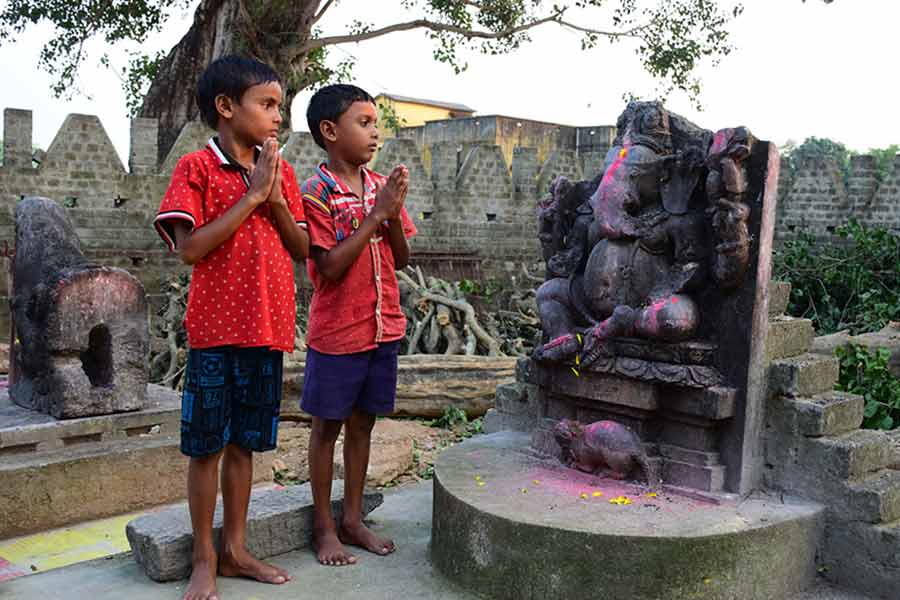
Two young devotees pay their respects to an idol of Lord Ganesh
As you pass the walled gate, instead of going straight towards the temple, taking a right turn takes you in front of several other statues. The most prominent of them is a statue of Ganesha almost similar to the previous except that the deity is in a standing posture. Other than this there are five veer stambhs or hero stones of which one is broken.
A hero stone is a small memorial stone lab commemorating the honourable death of a hero in battle. It usually consists figure of warrior with a weapon either in standing posture or riding a horse or an elephant mostly with a body of seated lion atop the memorial stone. One of the hero stones, which is apparently large, has an attendant with him. A separate small Ganesha statue stands below it. The Tamil or Kannada term of these objects are virakala or virakullu. Below this large hero stone there are several small shiva lingams submitted as offerings by the devotees.
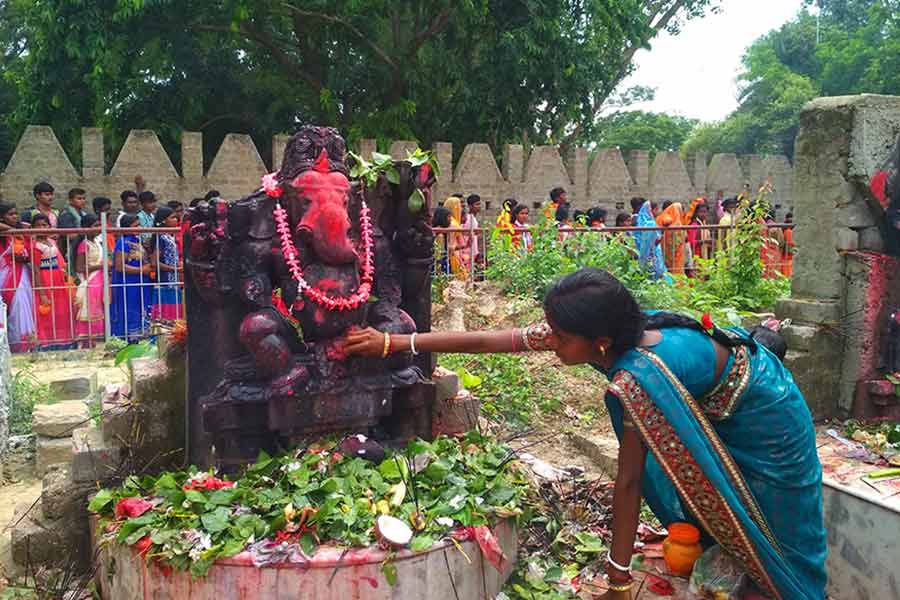
A devotee smears vermillion on a Ganesha idol on the temple complex during Shivratri. Such regular smearing of vermillion has eroded many of the idols in the temple complex.
Apart from these several other hero stones, two Sati stones have been discovered inside the village of which many are kept at Patna Museum as is evident from their catalogue. Sati stones were memorials erected to honour the widows of men killed in battle.
It looks similar to a hero stone except the fact that it accompanies a small figure of the Sati squatting below it and in many instances without the seated lion. The hero or sati stones is estimated to be built between 10th and 11th centuries according to the Patna Museum catalogue.
One such Sati stone in the museum has an inscription mentioning the phrases “Raja Putra Vadhadhuga (or ChadaDhuga) and a hero stone has an inscription stating “Raja Putra Sri Atandri Chaydva tasya” which may mean prince Atandri Chandra.
The ideal time is to visit the temple is around 11am, when puja takes places at the temple.
How to go: Purulia town can be reached from Kolkata by train, bus or by road. From there one can drive to Budhpur. For travelling by road, the 290km-long route via Bardhaman, Raniganj, Saltora and Raghunathpur is a better option.
Where to stay and eat: Purulia town has numerous options for accommodation. There is none at Budhpur. So it is advisable to carry food and water.
